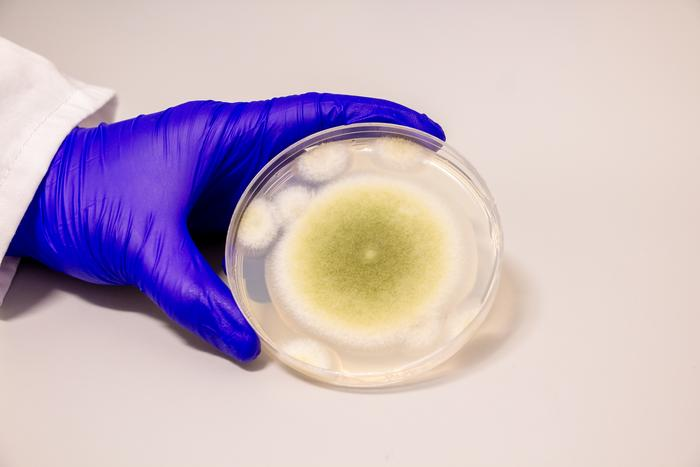The fungus Aspergillus flavus produces a class of molecules that have strong potential as future anti-leukemia drugs, although they have yet to be tried in living organisms.
Several of the archaeologists, and their funders, who first opened Tutankhamun’s tomb in the 1920s died relatively soon afterwards. Given that the ancient Egyptians were less than keen on anyone disturbing their final resting place, this gave rise to rumors of a “mummy’s curse”. People who believed such things found plenty of other examples to point to relating to those who dug successfully in the Valley of the Kings, although skeptics suggested they were just stringing together some unconnected examples.
Fifty years later, after 10 out of 12 scientists who entered the tomb of Poland’s Casimir IV died within weeks, it was clear more than chance was at play. The deaths were attributed to A. flavus, a fungus that feeds on cereal grains in dark environments, and whose spores cause lung infections. For 20 years debate has raged as to whether A. flavus was also implicated in killing at least some of those who died after opening Tutankhamun’s chamber, or if the random chance explanation was right all along.
Now however, A. flavus may have a chance to redeem itself from humanity’s perspective, potentially inspiring a whole new class of oncology drugs. Since cancer kills a lot more people than have ever entered a royal crypt, or encountered much A. flavus any other way, even saving a small fraction of those lives could put it in net credit with humanity.
Bacteria and fungi have two ways to make the short amino acid chains known as peptides: either through cellular structures known as ribosomes, or nonribosomal peptide synthetases. Further processing within the cell converts some of the first sort to ribosomally synthesized and post-translationally modified peptides (RiPPs). Thousands of bacterially produced RiPPs have been investigated as pharmaceuticals, but only a few fungi-produced RiPPs have been identified, let alone studied.
This might be a case of overlooking a natural treasure chest. As Dr Sherry Gao of the University of Pennsylvania reminds us in a statement, “Fungi gave us penicillin.” If you’re soft, squishy and can’t run away, an arsenal of chemicals lethal to your enemies is how you survive.
However, Dr Qiuyue Nie explained, “Purifying these chemicals is difficult.” Moreover, misclassifying many ribosomal peptides as non-ribosomal set back efforts to understand them for a long time. Nevertheless, the potential fungal peptides offer makes them worth the effort. The fungal RiPPs that have been found show unusually strong effects in animal cells. “The synthesis of these compounds is complicated,” said Nie. “But that’s also what gives them this remarkable bioactivity.”

It may not look appetizing, but Aspergillus flavus produces molecules that could be lifesavers.
Image credit: Bella Ciervo
Nie and co-authors studied twelve Aspergillus strains and decided A. flavus was the most promising candidate, eventually finding a specific protein that appears to be the source of the RiPPs. Purification of four RiPPs revealed a common structure of interlocking rings that had not been seen before. Molecules with these rings have been named asperigimycins and two of the first four were found to kill leukemia cells in test tubes. Even one asperigimycin that wasn’t effective on its own became as potent as two FDA-approved anti-leukemia drugs when combined with a lipid from royal jelly.
Of course, as XKCD memorably reminded us, effectiveness in a test tube is no guarantee of success in humans.
However, Nie and colleagues think there are a lot more asperigimycins to be found, so even if these fail, the class could have potential. “Cancer cells divide uncontrollably,” said Gao. “These compounds block the formation of microtubules, which are essential for cell division.”
Moreover, the team identified a novel mode of action, hijacking the gene SLC46A3 to allow asperigimycins and other cyclic peptides to enter cells in lethal quantities. More than 20 cyclic peptides have already been approved as treatments for varied diseases, but struggle to get into cells, so the benefits of improving entry into target cells are obvious.
The same asperigimycins that work so well against leukemia cells proved ineffective against three other types of cancers, but that might actually be good news. Oncologists have long known that almost anything claiming to “kill cancer” was either a scam or likely to destroy healthy cells as well because cancer is not one disease. A treatment specific to a few types of cancers, or possibly just one, has much more chance of success.
Before we get to clinical trials, let alone a widely available drug, asperigimycins need to be tested in animals. Meanwhile, however, the work reminds us that billions of years of evolution have proven far more creative than humans when it comes to molecular design. “Nature has given us this incredible pharmacy,” said Gao. “It’s up to us to uncover its secrets. As engineers, we’re excited to keep exploring, learning from nature and using that knowledge to design better solutions.”
The authors note “the chemical synthesis of the heptacyclic asperigimycins could be intriguing,” prompting the idea we might need to harvest supplies from fungus-rich crypts, rather than bioreactors. It probably won’t happen, but goth biochemists would be very happy.
The study is published in Nature Chemical Biology.
Source Link: The Fungus Blamed For “Tutankhamun’s Curse” Could Make A Potent Anti-Cancer Drug